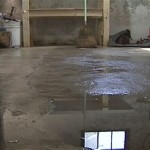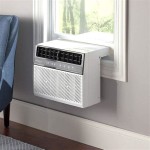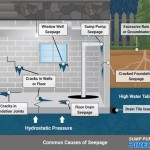How To Heat A Basement In Winter
Heating a basement in winter presents unique challenges compared to heating the rest of a house. Basements are typically located underground, making them susceptible to cold from the surrounding earth. This can lead to significant temperature discrepancies between the basement and the upper floors, which can affect overall comfort and energy costs. Effective heating solutions must address these specific challenges to create a comfortable and energy-efficient basement environment.
Several factors contribute to the difficulty of heating a basement. The earth surrounding the basement walls acts as a thermal mass, which can both insulate and draw heat away, depending on the ground temperature. Concrete walls and floors are poor insulators, allowing heat to escape easily. Also, basements are often poorly insulated, if at all, further exacerbating heat loss. Finally, air leakage through cracks and gaps in the foundation and around windows contributes significantly to drafts and heat loss. Addressing these factors is crucial for selecting the appropriate heating method.
A variety of heating options are available for basements, each with its own set of advantages and disadvantages. Portable space heaters offer a quick and localized solution but are generally less efficient and can be costly to operate long-term. Central heating systems, extended from the main house, provide consistent heat throughout the basement but may require significant installation work. Ductless mini-split systems offer energy-efficient heating and cooling and can be installed with minimal disruption. Electric baseboard heaters are relatively inexpensive to install but can be less efficient than other options. Radiant heating systems, such as heated floors, provide comfortable and even heat but are more expensive to install. The best option depends on the size of the basement, budget, and energy efficiency goals.
Understanding Basement Heat Loss
Before implementing any heating strategy, it's important to understand the primary sources of heat loss in basements. As mentioned earlier, the surrounding ground acts as a thermal mass, constantly seeking equilibrium with the basement temperature. This means that in winter, the ground will draw heat away from the basement, leading to temperature drops. The extent of this heat loss depends on the climate, the depth of the basement, and the soil composition.
The concrete foundation walls and floor are also major contributors to heat loss. Concrete is a relatively poor insulator, allowing heat to conduct easily through the material to the surrounding earth. This is particularly problematic in uninsulated basements, where the concrete is directly exposed to the cold ground. Insulation helps to create a thermal barrier, reducing the amount of heat that can escape through the concrete.
Air leakage is another significant source of heat loss. Cracks and gaps in the foundation, around windows and doors, and where pipes and wires enter the basement allow cold air to infiltrate and warm air to escape. This creates drafts and makes it more difficult to maintain a comfortable temperature. Sealing these air leaks can significantly reduce heat loss and improve energy efficiency. Identifying and addressing these key areas of heat loss is the first step toward effectively heating a basement.
Choosing the Right Heating System
Selecting the appropriate heating system for a basement depends on various factors, including the size of the basement, the desired level of comfort, the budget, and energy efficiency goals. Each type of heating system has its own strengths and weaknesses, and it's essential to carefully consider these factors before making a decision.
Portable space heaters are a convenient and inexpensive option for providing localized heat in a basement. They are easy to move from room to room and can be a good solution for heating a small area. However, space heaters are generally less energy-efficient than other heating systems and can be costly to operate for extended periods. They also pose a safety risk if not used properly, so it's crucial to follow the manufacturer's instructions carefully.
Extending the central heating system from the main house to the basement can provide consistent and even heat throughout the entire space. This option is typically more expensive than using space heaters, as it requires professional installation of ductwork and vents. However, it can be a more energy-efficient and comfortable solution in the long run, especially for larger basements that are frequently used. Compatibility with the existing system and the capacity of the furnace or heat pump are important considerations.
Ductless mini-split systems offer a flexible and energy-efficient heating and cooling solution for basements. These systems consist of an outdoor unit and one or more indoor units that are mounted on the wall. They operate on electricity and use refrigerant to transfer heat, providing both heating and cooling capabilities. Mini-split systems are relatively easy to install and can be a good option for basements that lack existing ductwork. They also offer precise temperature control and can be programmed to operate on a schedule.
Electric baseboard heaters are an inexpensive option for providing supplemental heat in a basement. They are easy to install and can be a good choice for smaller basements or areas that only need occasional heating. However, baseboard heaters are less energy-efficient than other heating systems and can be costly to operate for extended periods. They also tend to provide uneven heat distribution, with the area near the heater being warmer than other parts of the basement.
Radiant heating systems, such as heated floors, provide comfortable and even heat throughout the basement. These systems work by circulating warm water through pipes embedded in the floor, radiating heat upward into the room. Radiant heating is a very efficient way to heat a space, as it heats objects directly rather than heating the air. However, radiant heating systems are more expensive to install than other options and typically require professional installation. They are best suited for new construction or major renovations.
Insulation and Air Sealing for Optimal Heating
Regardless of the heating system chosen, proper insulation and air sealing are crucial for maximizing energy efficiency and creating a comfortable basement environment. Insulation helps to reduce heat loss through the walls and floors, while air sealing prevents drafts and reduces the amount of cold air that enters the basement. These measures work together to keep the basement warmer and more energy-efficient.
Insulating the basement walls is one of the most effective ways to reduce heat loss. Several types of insulation can be used, including rigid foam board, fiberglass batts, and spray foam. Rigid foam board is a good option for insulating concrete walls, as it provides a continuous layer of insulation and is resistant to moisture. Fiberglass batts are a less expensive option but are more susceptible to moisture and require a vapor barrier. Spray foam provides excellent insulation and air sealing but is more expensive than other options.
Insulating the basement floor can also help to reduce heat loss, especially in colder climates. This can be done by installing a layer of rigid foam board under the finished floor or by using a subfloor system with built-in insulation. Insulating the floor can also help to prevent condensation and moisture problems.
Air sealing is another crucial step in improving basement energy efficiency. This involves sealing any cracks and gaps in the foundation, around windows and doors, and where pipes and wires enter the basement. Common materials used for air sealing include caulk, weather stripping, and expanding foam. Air sealing can significantly reduce drafts and improve the overall comfort of the basement.
Pay particular attention to sealing around windows and doors. Use weather stripping to seal gaps around the frames and caulk to seal cracks between the frames and the walls. Consider replacing old, drafty windows with energy-efficient models. Also, seal any openings where pipes or wires enter the basement using expanding foam or caulk.
Inspect the foundation walls for cracks and gaps and seal them with caulk or hydraulic cement. Pay attention to areas where the sill plate meets the foundation wall, as this is a common source of air leakage. Sealing these air leaks can significantly reduce heat loss and improve the overall comfort of the basement. Regularly inspecting and maintaining these seals is also beneficial in the long run.

10 Basement Heating Options To Keep You Warm Cozy In Winter

How To Heat A Basement In Winter Essential Home Garden 2024 Heater Old

How To Heat Your Basement In Winter Warm Cozy Solutions Csg Renovation

Keep Your Basement Warm In The Winter With These Tips H

8 Ways To Warm Up A Cold Basement Sheffield Homes Finished Basements And More

Top 5 Ways To Heat Your Finished Basement Heating Options

8 Best Basement Heaters For A Warm And Cozy Winter
.jpg.aspx?strip=all)
What Basement Heating Options Are The Best For My House

How To Heat Your Basement Efficiently Brothers Constructionbrothers Construction

Tips For Heating And Cooling Your Basement Homeserve Usa







